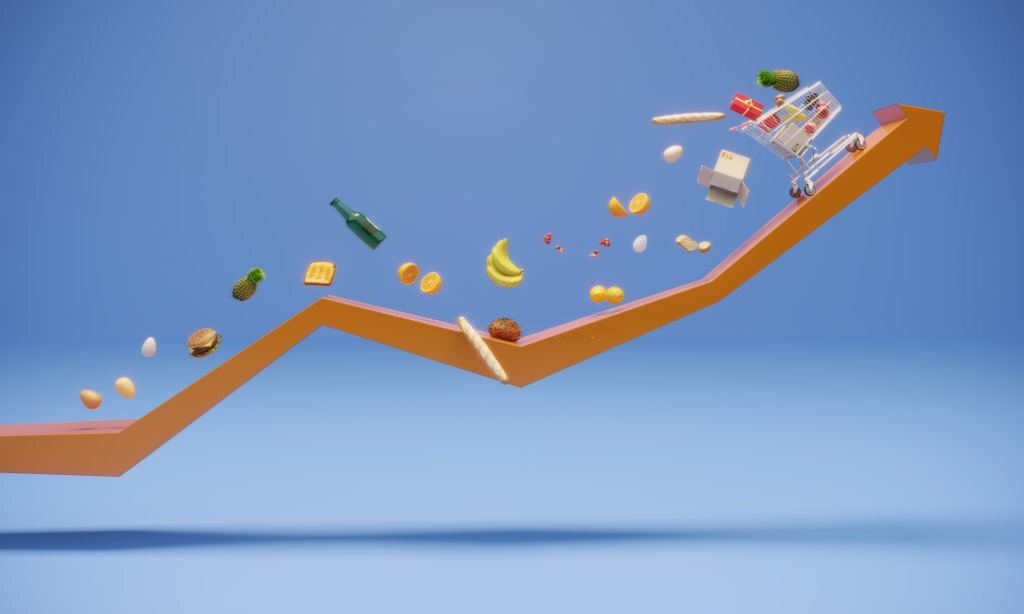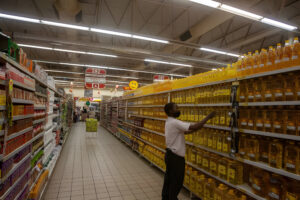The Competition Commission of South Africa has unveiled the most recent Essential Food Pricing Monitoring (EFPM) Report, a document that scrutinizes the dynamics of food pricing in the nation, comparing the local trends with global patterns and offering a deep dive into the beef value chain in the country.
Food Inflation Remains High Despite Decreased Overall Inflation
While the general inflation rate has seen a reduction, the report underscores that food inflation is persisting at nearly double the rate of the total inflation for all goods and services. The Commission is steadfast in its commitment to monitoring the essential food prices and probing the elements fueling the food inflation, thereby ensuring transparency in the profit margins established by the producers and retailers of these products.
The first half of 2023 witnessed a decline in upstream commodity prices. The Commission is keen to observe how swiftly this decline would be reflected in the consumer prices. However, the report reveals a lag in this transmission, with price reductions either being inconsistent or delayed, a scenario attributed to other cost pressures faced by producers and retailers.
Comparative Analysis with Global Peers
Drawing parallels with recent studies conducted by competition authorities in Canada, Ireland, and the UK, the report finds that South African retailers are enjoying higher profitability compared to their counterparts in these nations. This discrepancy could be rooted in various factors including a distinct level of competition. While the UK sees a diminishing retailer margin owing to the rise of discounters, South Africa experienced an increment in margins from 2019 to 2022, a trend that recently saw a downturn mainly due to the costs associated with load shedding.
Rocket-and-Feather Effect in Local Staple Food Value Chains
Researchers have identified a “rocket-and-feather” effect in the local staple food value chains, a phenomenon where prices escalate swiftly during inflationary phases but decrease sluggishly when inflation wanes. This trend raises concerns over potential competition dysfunction, with the report also shedding light on insights from the US and the EU regarding the role of broadening mark-ups and inflation induced by large firms in the current economic climate.
Key Findings in Essential Food Items
Delving into recent pricing trends and margins at both producer and retail levels for items such as sunflower oil, bread, maize meal, and Individual Quick Frozen (IQF) chicken pieces, the report shares the following critical observations:
- Despite a roughly 10% decrease in bread and wheat prices in the first quarter, producer and retailer prices for bread surged by 3% in the same period, initiating a decline only in the second quarter.
- White maize prices have been on a downward trajectory since February, falling by 23%, yet the prices for maize meal at producer and retail levels remain unchanged.
- Cooking oil prices have been decreasing over the past year, with sunflower seed prices remaining stable in South Africa. However, the reduction in producer prices has been slow, leading to expanded margins.
- IQF chicken price inflation is below the food inflation rate, a trend that will continue to be monitored by the Commission, especially following the reimplementation of anti-dumping tariffs.
Spotlight on the Beef Sector
The report takes a meticulous look at the beef sector in South Africa, a vital part of the nation’s economy and dietary habits. It observes an increasing concentration in the industry with more firms opting for vertical integration across various stages of the value chain. The sector has seen a significant reduction in the number of commercial cattle farmers over the past decade, with the top 10 cattle feedlots now accounting for nearly 70% of all cattle, a substantial increase from 50% six years ago.
Despite a notable decrease in weaner calve prices leading to reduced beef carcass prices, the retail prices for beef cuts have not seen a corresponding decline this year. This situation has resulted in retailers claiming a 40% share of the shelf price, the highest since January 2021. The Commission’s findings underscore a critical juncture in the South African food market, highlighting areas that warrant close monitoring to ensure fair pricing and competition.
Full report can be found here.














